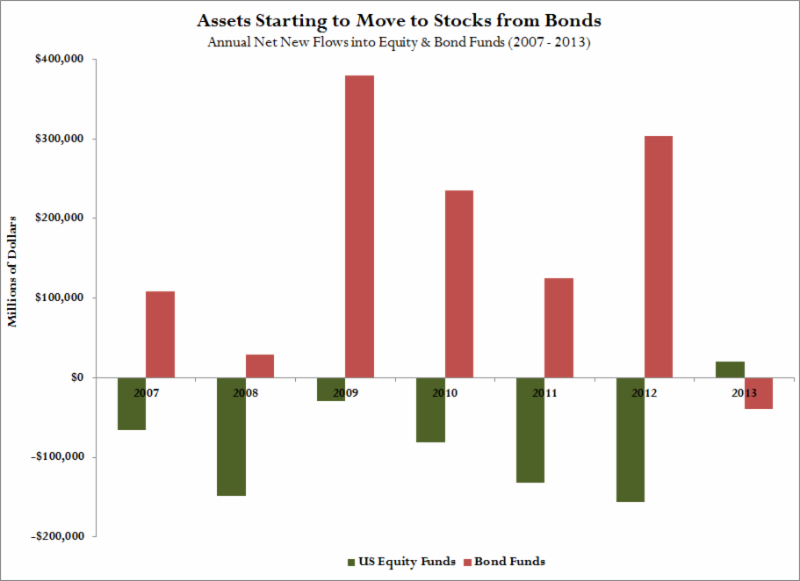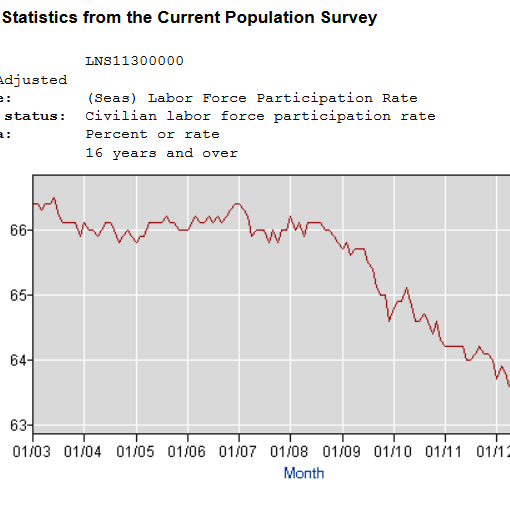“Twenty-six times I’ve been trusted to take the game-winning shot and missed. I’ve failed over and over and over again in my life. That’s why I succeed.” — Michael Jordan, Hall-of-Fame Basketball Player
US equity markets soared in 2013. The S&P 500 Index (SPX) appreciated by more than 32%; its best annual return since 1997. The S&P 500 also finished the year above the December 31, 1999 close for the first time. Relative to the rest of the world, the US equity market was amongst the best performing indices. Japan was the only developed market to outperform the US while many emerging markets posted negative returns in 2013.
Investors focused on the clear signs that the slow and steady US economic recovery was more stable than had been expected at the beginning of 2013. As a result, US stocks successfully climbed multiple walls of worry including sequestration, higher taxes, reduced fiscal spending, dysfunction in Washington and multiple international crises.
The US economy experienced a strong recovery in 2013. GDP growth accelerated from a sluggish 1.1% in Q1 to a moderate 2.5% in Q2 and towards a robust 4.1% in Q3, all while unemployment declined from 7.9% in January to 7.0% in November.
Housing, autos and manufacturing demonstrated material improvement and contributed to the economic recovery. According to the Case-Schiller Index, housing prices appreciated at a double digit rate, which helped drive 2013 housing starts to reach their highest level since 2006. Capacity utilization improved to 79%, its highest reading since the start of the Great Recession. Acknowledging the strengthening economy, the Federal Reserve announced in December that it would “taper” its quantitative easing program.
Redwood 2013 Review
The Covestor Redwood US Equity Large Cap Core portfolio performed in line with its respective benchmarks in 2013. Redwood’s investment team recognizes the risk of complacency and strives for continuous improvement. Accordingly, the portfolio team engages in regular performance attribution analysis, which is the process of understanding the drivers of investment performance – both good and bad.
Identifying both the positive contributors to a benchmark’s performance as well as the detractors from a portfolio’s performance is crucial. This information allows the portfolio team to make more informed investment decisions.
Our attribution analysis reminds us that we do make mistakes. We strive to learn from them so as to improve our investment process and analytical thinking.
US Equity Market 2014 Outlook
Redwood continues to believe that the US equity markets are attractive over the intermediate and long-term. Despite the strength in the equity markets in 2013, the S&P 500 has only appreciated at a 2.1% compounded annual rates over the past thirteen years.
This period is reminiscent of 1966 – 1982 when the S&P 500 experienced a series of bull and bear markets but was basically flat over that time period. Subsequently, the market finally broke out of its trading range and the following decade was a strong period for US equity investing.
The current outlook has more positives than the previous 15 years.
-
US Economy Improving. In 2013, the US economy showed surprising strength despite a calculated headwind of 1.5% from higher taxes and reduced government spending. Fiscal policy challenges are anticipated to abate in 2014 and monetary policy is expected to remain accommodative, so the US economy should experience accelerated growth. I don’t have a crystal ball, but in my opinion the 2014 earnings growth for the companies in the S&P 500 could double to the 8% – 9% range from the 4% growth rate in 2013.
-
Corporate Balance Sheets Strong. US corporations have record levels of cash on the balance sheet and corporate management teams appear focused on returning the cash to shareholders through both increased dividends and share repurchases. In each of the past three years, dividends for S&P 500 companies have grown on average 15% – 18% annually.
-
Great Rotation Underway. Investors poured money into fixed income securities from 2008 – 2012. Much of the record level of fixed income inflows came either from selling equities or diverting cash flow that would have gone into equities. Given that Redwood believes that interest rates have reached a secular bottom, we anticipate that significant money will flow back to equities from fixed income over the next five years.
-

Source: Investment Company Institute
Investor sentiment for US equities in 2014 is likely to be guarded based on the experience from 2013. Investors have long memories and the fears of 2008-09 remain. Many investors will likely question the equity markets’ ability to generate strong returns in back-to-back years.
However, Redwood research shows that an above average return in one year for the S&P 500 does not translate into below average performance in the following year. Since World War II, there have been 17 years when the S&P 500 appreciated by 20% or more. In the following year after a 20%+ performance, the S&P 500 appreciated on average 11.2% and had a positive return 82% of the time. This is far better than the 1946 – 2012 average return of 8.1% and positive return 69% of the time.
While Redwood’s outlook is positive for US equity markets in 2014, a market correction is not out of the question. Risks include technical deterioration, Federal Reserve leadership transition, “tapering”, and further political turmoil. While any correction might be painful in the short term, in the absence of deteriorating economic or fundamental factors, Redwood would view such a correction as constructive for future equity market returns.
Few predicted the strength of the US equity market in 2013. We do not expect gains of the same magnitude in 2014, but Redwood remains optimistic about the US equity market over the intermediate and long-term.
We greatly appreciate your confidence in Redwood Investments and look forward to talking with you soon.
DISCLAIMER: The reader should not assume that any investments identified were or will be profitable or that any investment recommendations or investment decisions we make in the future will be profitable. Past performance is no guarantee of future results.




